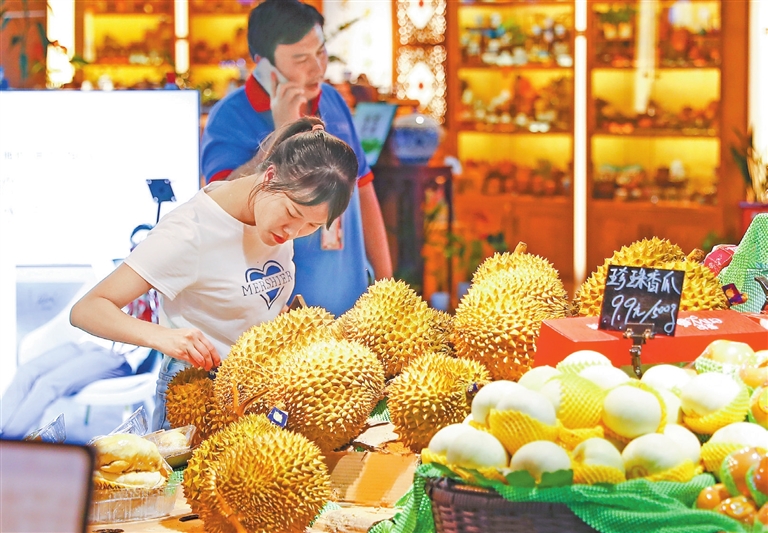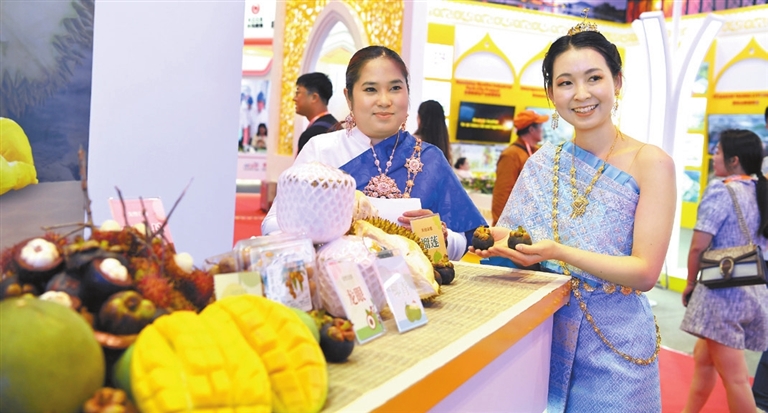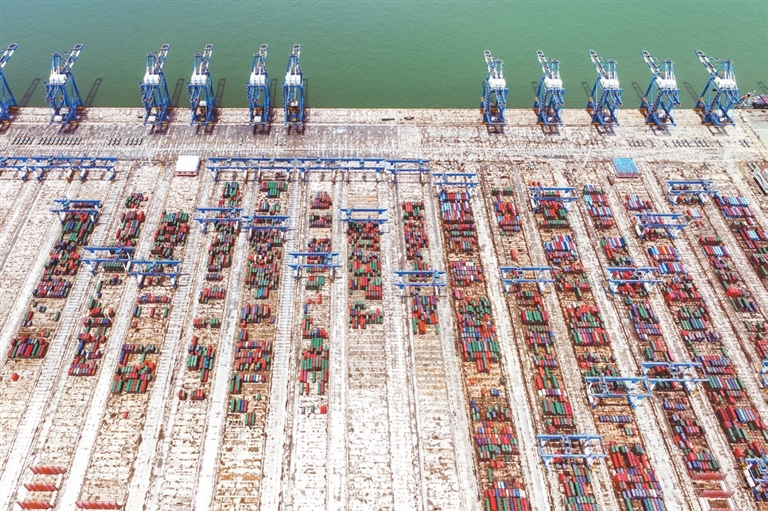


SEATED behind a stack of durian-flavored snacks at the Malaysian pavilion of the China-ASEAN Expo, two livestreamers were introducing the Southeast Asian country’s iconic thorny fruit. “Malaysia is home to more than 200 durian varieties, but I know the Musang King is the favorite in China,” said one of the livestreamers, who is a Malaysian fruit exhibitor, to hundreds of viewers on Douyin, the Chinese version of TikTok. At the expo currently underway in South China’s Guangxi Zhuang Autonomous Region, there’s a palpable excitement about China’s growing craving for this pungent fruit. Numerous booths offer a diverse range of durian products, spanning from delectable durian ice cream to aromatic durian coffee, as they seek collaboration with Chinese partners. Hailing from Malaysia, Lau Hieng Seng proudly presented over 600 servings of durian-pulp ice cream at this year’s exhibition, having missed out on three previous editions due to the impact of COVID-19. “Anything with durian in it is hugely popular among Chinese consumers. Our only concern is ensuring that our stock is sufficient,” he said. According to an HSBC report, the Chinese market accounted for a staggering 91% of the global demand for durian in the past two years. Customs and industry association data reveal that the country imported 825,000 tons of durian last year, a figure nearly four times higher than that of 2017. As the majority of durians sold in China are imported from Southeast Asia, these “king of fruits” have emerged as a prominent symbol of the flourishing China-ASEAN cooperation and China’s immense market potential. Huge market Chinese Premier Li Qiang on Sunday said that China-ASEAN relations have become the most successful and dynamic model for collaboration in the Asia-Pacific region, serving as an example of building a community with a shared future for all. With a total population of more than 2 billion, China and ASEAN countries constitute a huge market, with its expansion and integration continuing to inject new impetus into the regional economy. The flow of goods in this regional market has continued to benefit from tariff-free policies and expanded market access under the frameworks of the China-ASEAN Free Trade Area and the Regional Comprehensive Economic Partnership (RCEP). “A decade ago, ASEAN fruits like durian, mangosteen and golden coconut were once rarities for Chinese consumers, but now they are sold at fruit stalls in almost every big Chinese city at affordable prices,” said Wang Zhengbo, president of a Guangxi-based fruit company. Durians, basically imported from Thailand and Malaysia previously, were expensive due to limited supplies. Last year, Vietnamese durians, known for their longer harvest season and lower prices, gained market access into China under the RCEP framework. This success was followed by the import of fresh durians from the Philippines starting January this year. Encouraged by the success of Vietnamese durian imports, Wang’s company last year inked extensive contracts with Vietnamese durian farms, which in total cover nearly 3,000 hectares. “We plan to import more than 3,000 containers, or 60,000 tons, of Vietnamese durians this year to meet the Chinese market’s demands,” Wang said. Official data from Vietnam reveals an astonishing 18-fold increase in durian export earnings in the first five months alone, surpassing US$500 million. During this period, Vietnam exported over 65,000 tons, with China accounting for a staggering 97% of the total shipments. Another keen observer of China’s insatiable appetite for durian is Wong Kok Loong from Malaysia. Since 2015, Wong has been participating in the China-ASEAN Expo, where he introduced durian pastries and candies. Capitalizing on China’s thriving e-commerce industry, Wong expanded his presence by establishing stores on leading platforms like JD.com and Tmall. “Now I sell durian products in over 80 categories, including durian custard roll and durian cheese,” he said. “China’s durian market still has huge potential for growth, as only a small proportion of Chinese, mainly living in large cities, have accessed durian and durian products,” said Wong, expressing optimism in the Chinese market. In August, China’s retail sales of consumer goods reported a 4.6% increase after a three-month slowdown, indicating an improving consumer sentiment as the country’s economic recovery gained momentum. Regional connectivity In recent years, the development of transportation infrastructure amid the China-ASEAN cooperation driven by the Belt and Road Initiative (BRI) has significantly boosted the durian trade, as there are specific requirements for transporting the fruit due to its short shelf life. On June 11, a train loaded with about 500 tons of fresh Thai durians reached Southwest China’s Chongqing. Traveling on the China-Laos Railway, a flagship BRI project, the entire journey took only four days, shortened from the previous eight to 10 days via land-sea routes. “Durian imports can reach consumers faster with more transportation options,” said Guan Caixia, a Guangxi-based durian importer, whose Thai durians are either shipped through road-rail passage via Youyiguan land port or through sea-rail route via Qinzhou Port in the Beibu Gulf, a key hub for China-ASEAN trade. But it is not just tropical fruits that have benefited from the improved connectivity. In Qinzhou, China-made auto parts, soda ash, and mechanical and electrical products are being shipped to ASEAN countries. “We handle about 20 rail-sea intermodal trains every day, and our cargo delivery volume has increased from 27,000 tons in 2017 to nearly 3.3 million tons in 2022,” said Huang Jiangnan, head of Qinzhou Port’s east railway station. According to China’s Ministry of Commerce, trade between China and ASEAN countries rose from more than US$100 billion in 2004 to US$975.3 billion in 2022. The two sides have been each other’s largest trading partners for three years in a row. “Against the backdrop of sluggish world economy, China-ASEAN trade and cooperation have stood out with its robust growth, which is of both regional and global significance,” said Zhang Jianping, a deputy director of the Chinese Academy of International Trade and Economic Cooperation. At the opening ceremony of the China-ASEAN Expo, Premier Li said China is willing to import more specialty products from ASEAN countries, upgrade regional connectivity, and build a more stable and smooth regional industrial and supply chain based on comparative strengths. “China will continue to firmly support the ASEAN-centered regional cooperation, synergize the Belt and Road Initiative with the development strategies of other countries, and help ASEAN countries realize their development goals. China will work with ASEAN countries to advance regional economic integration,” Li said.(Xinhua) | 
